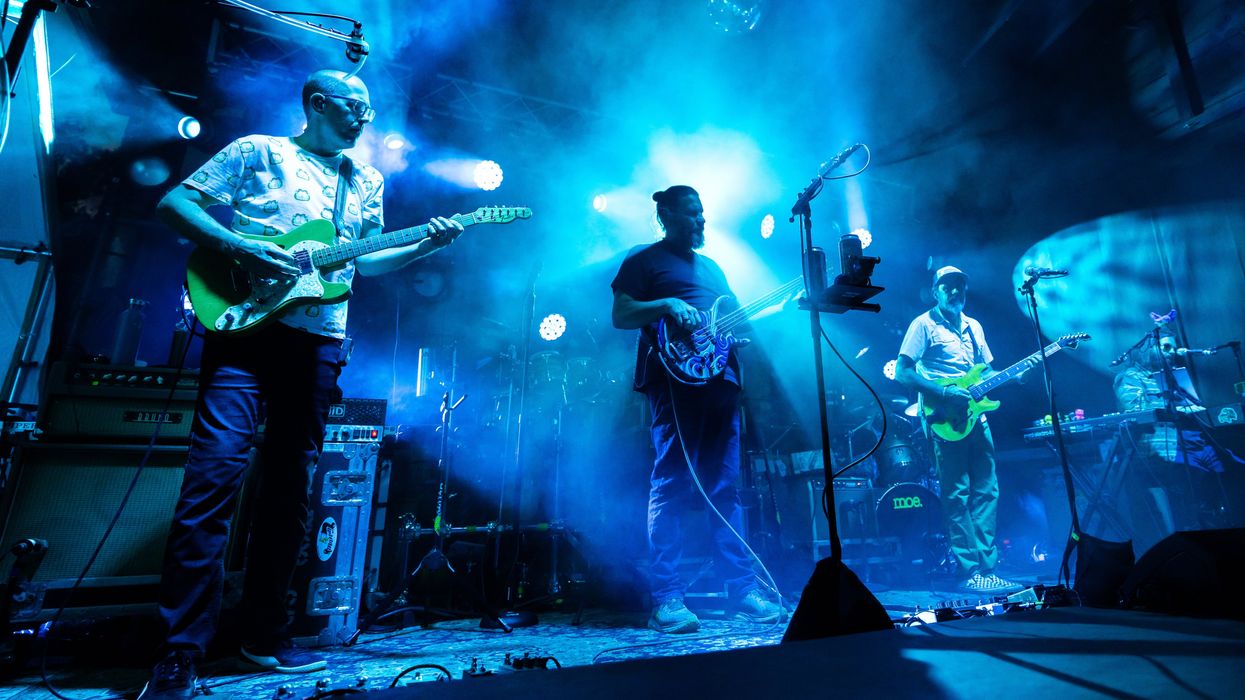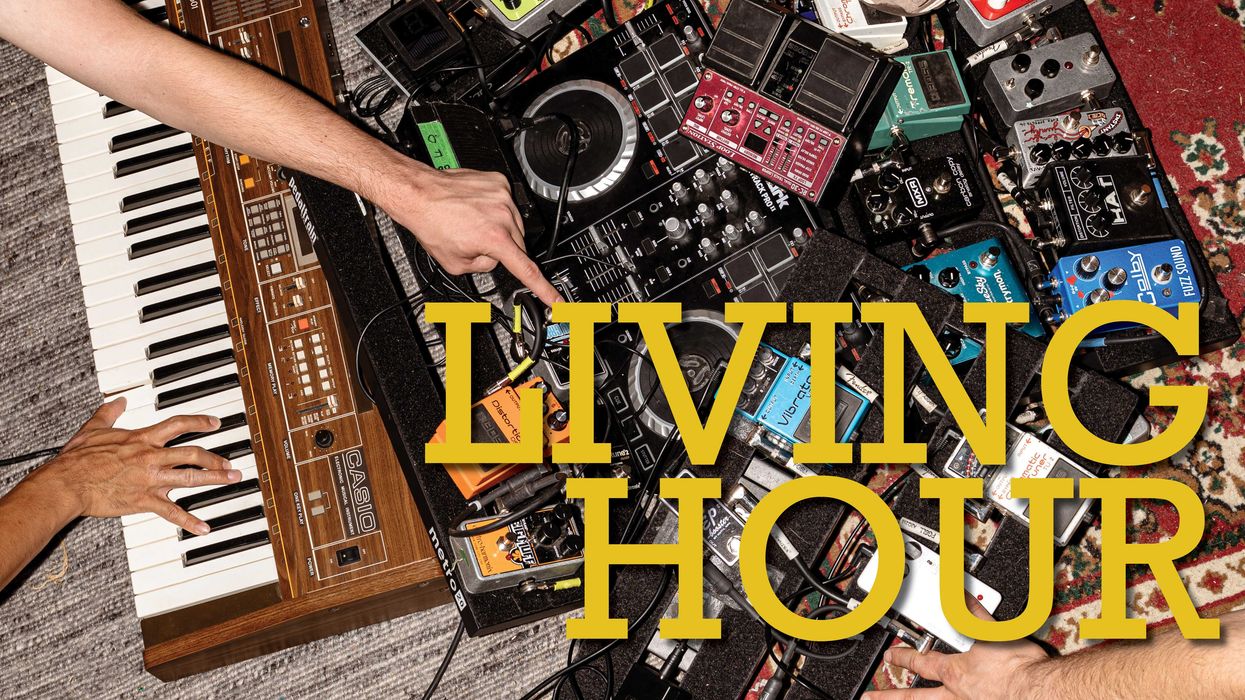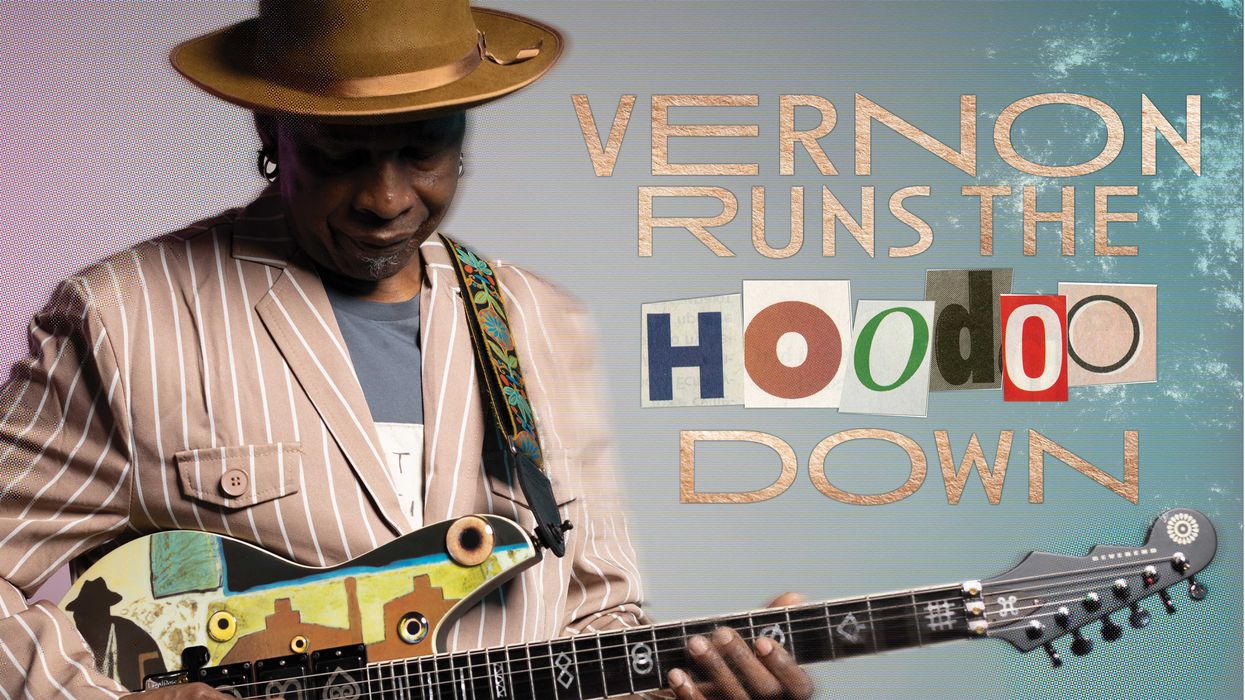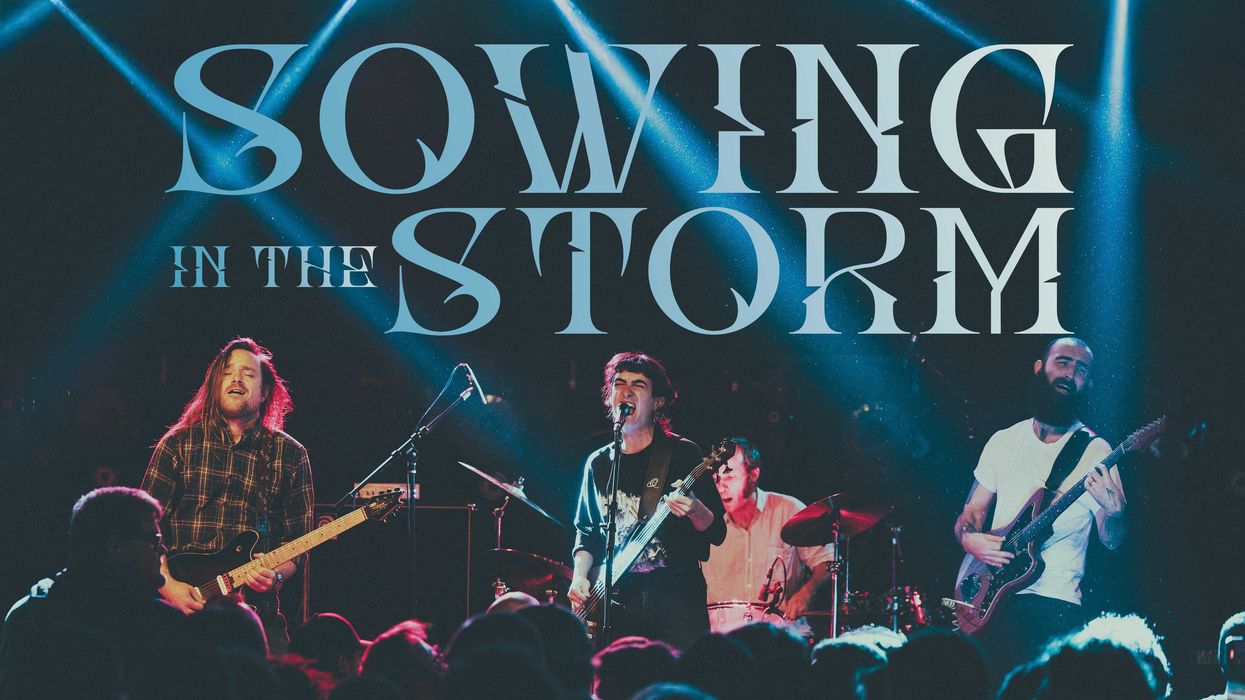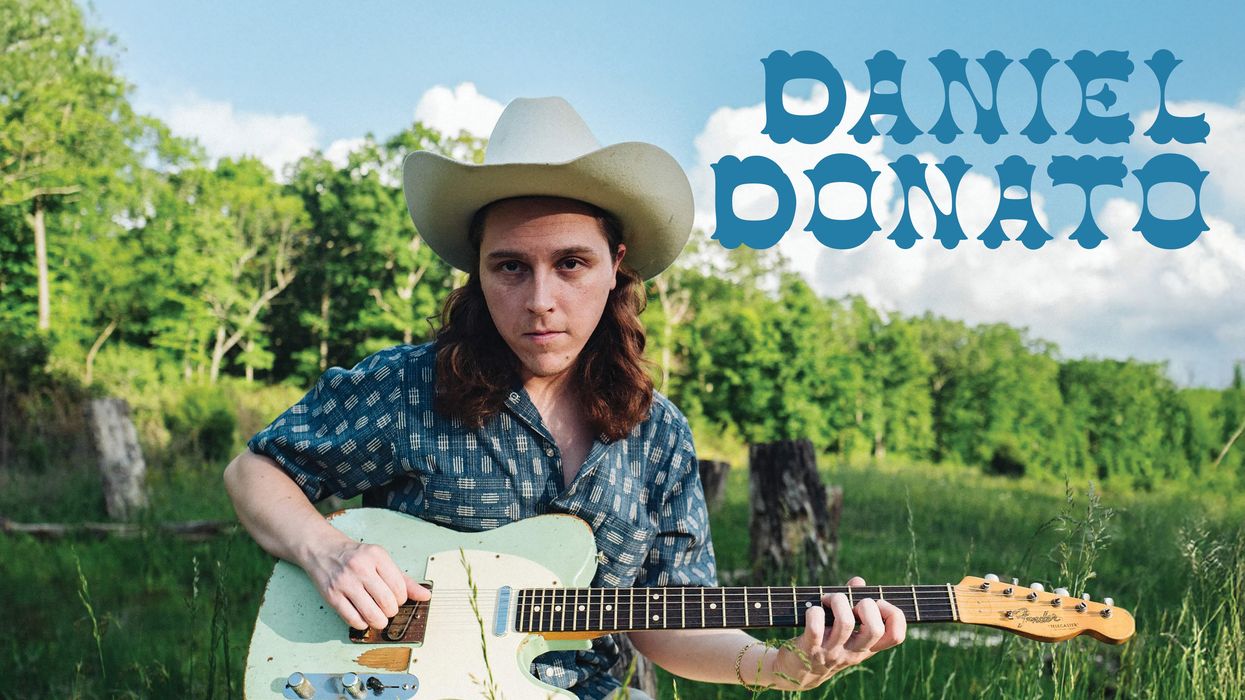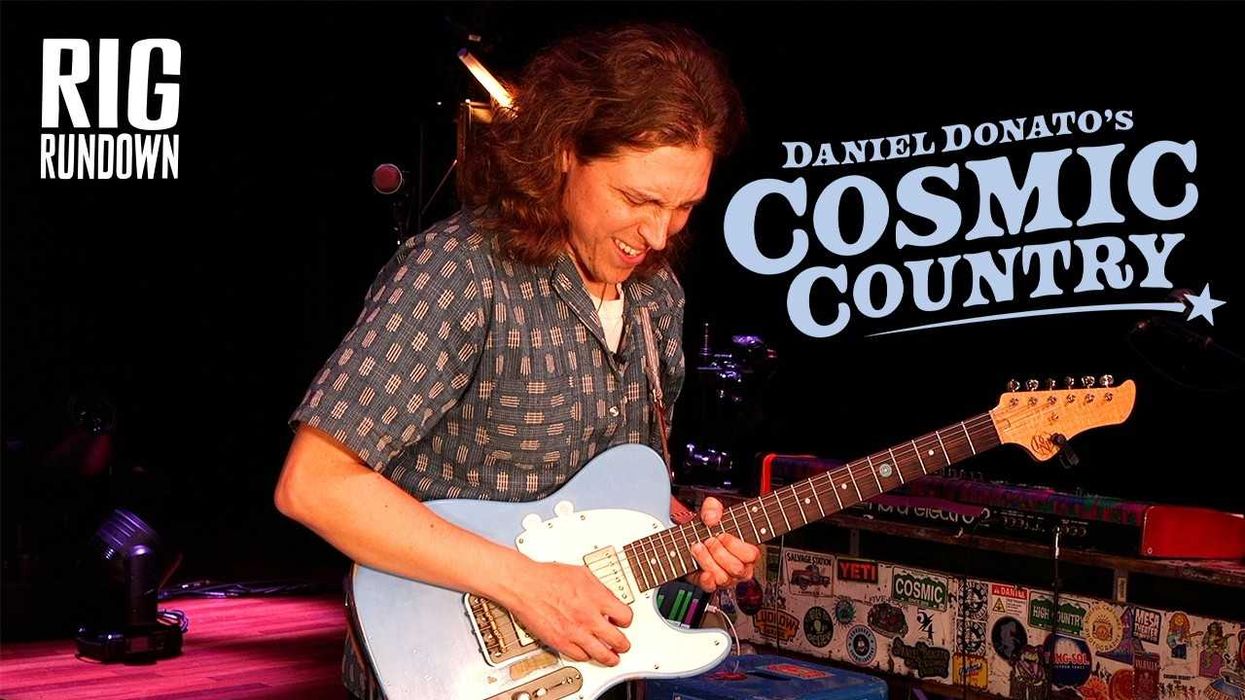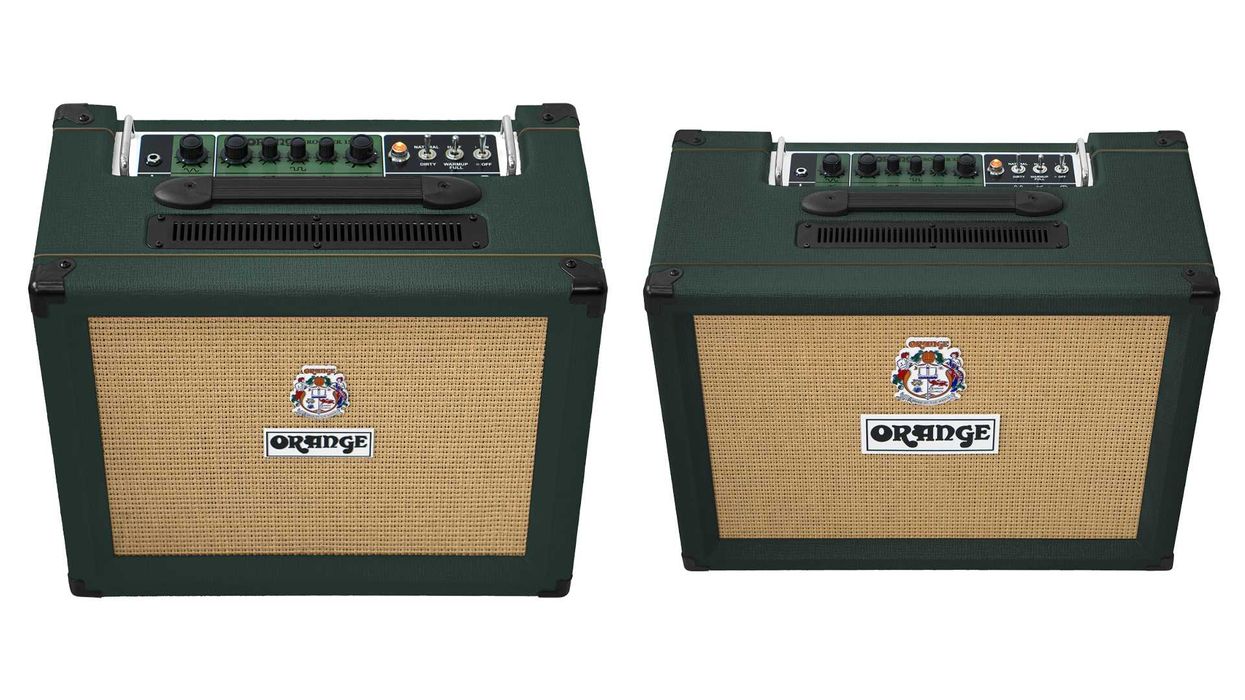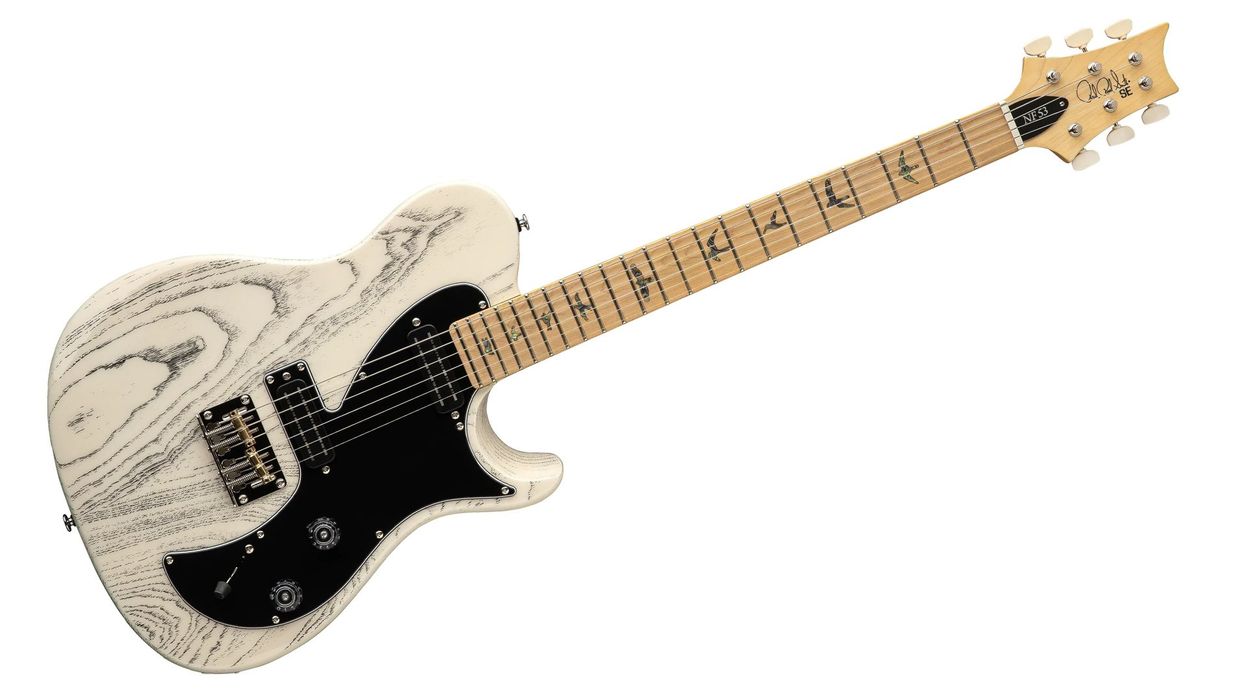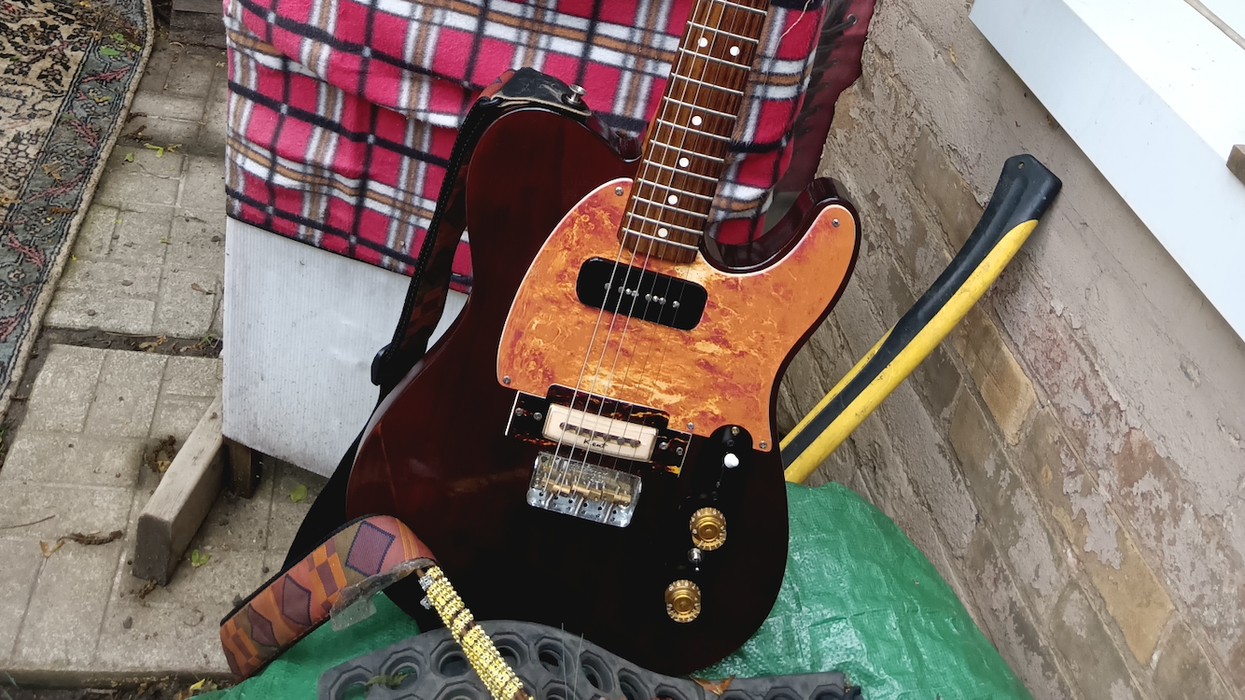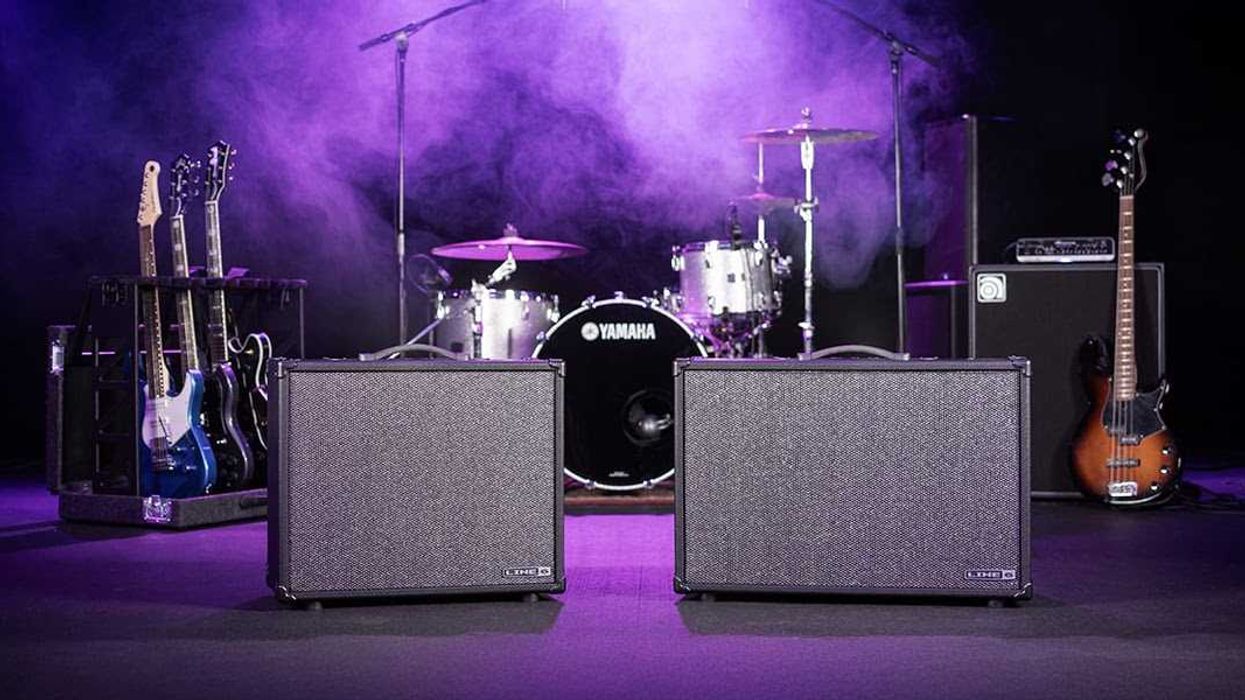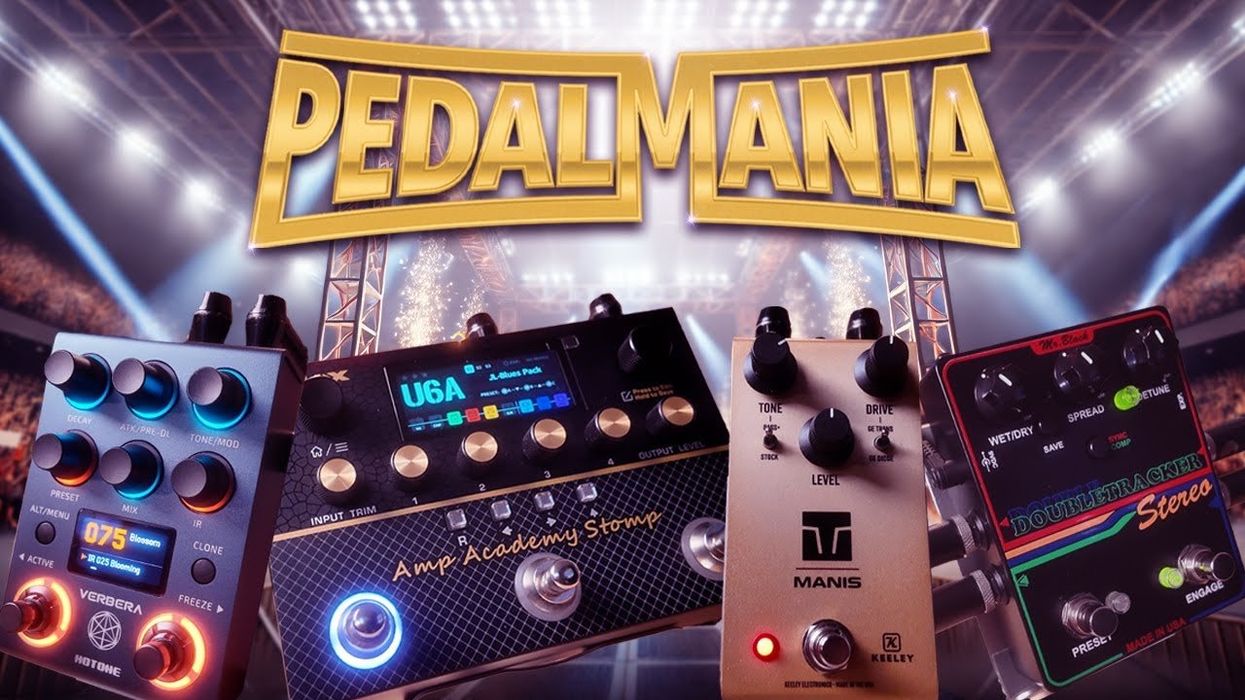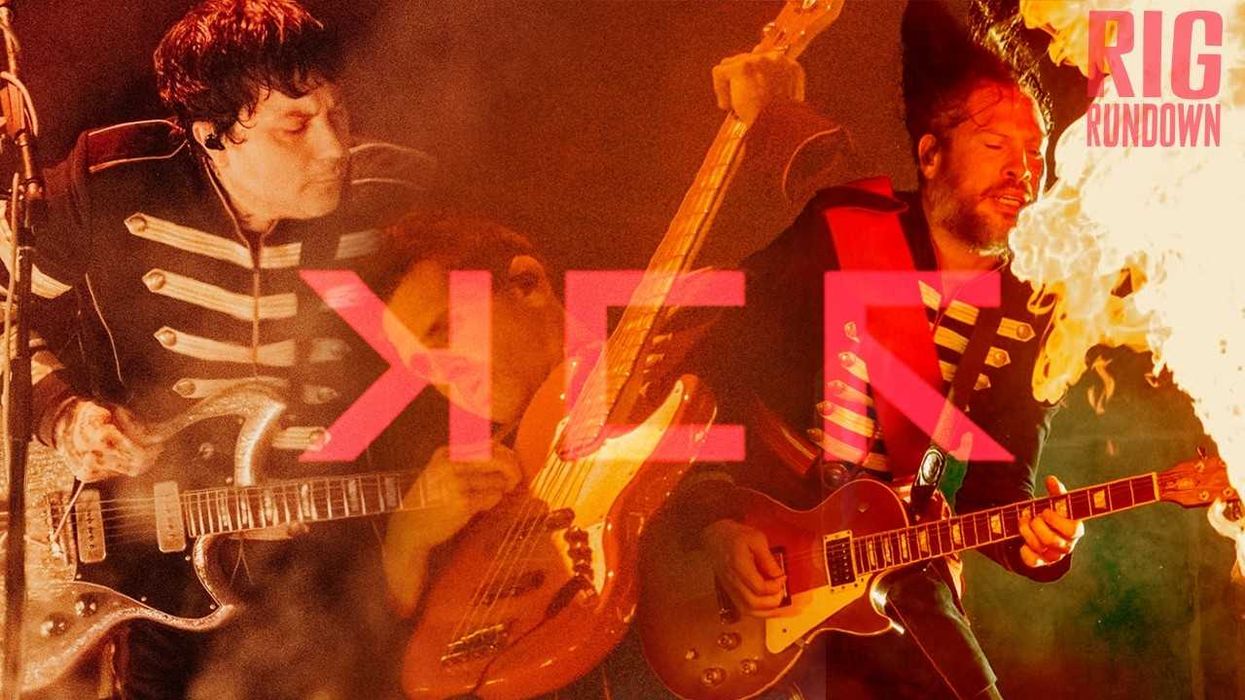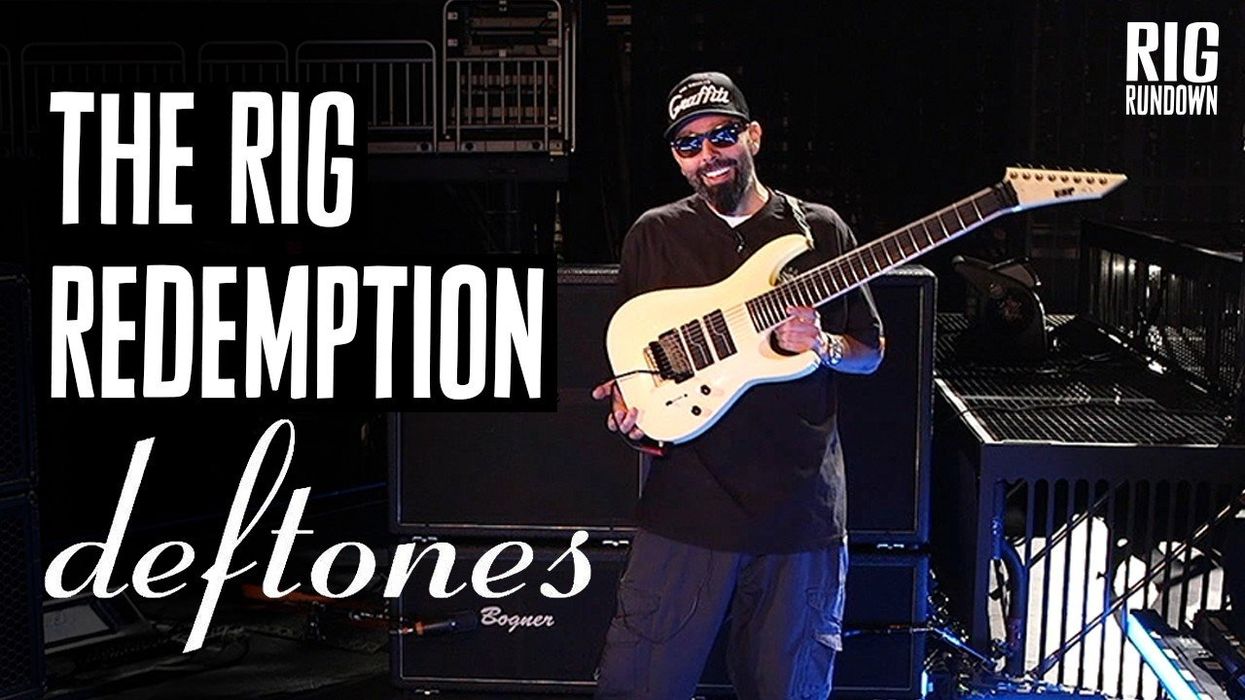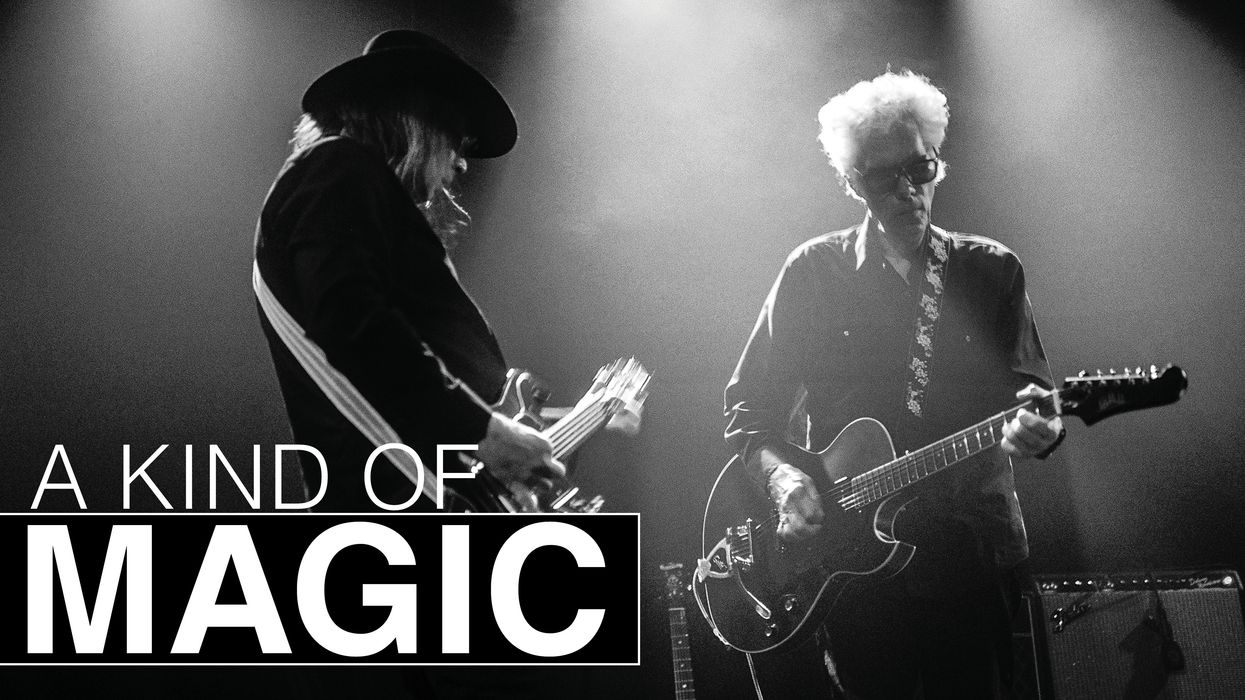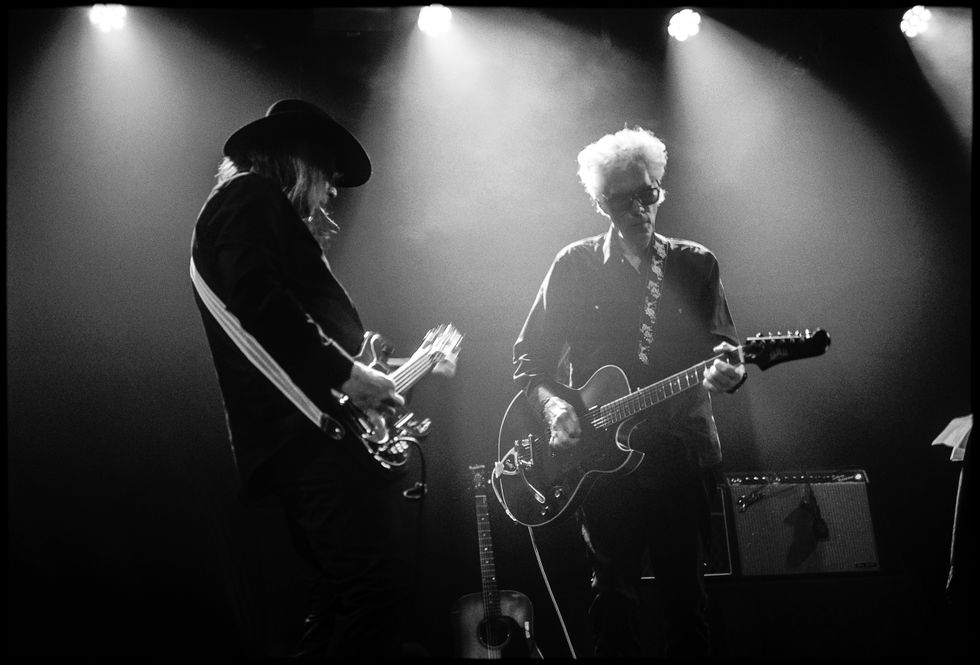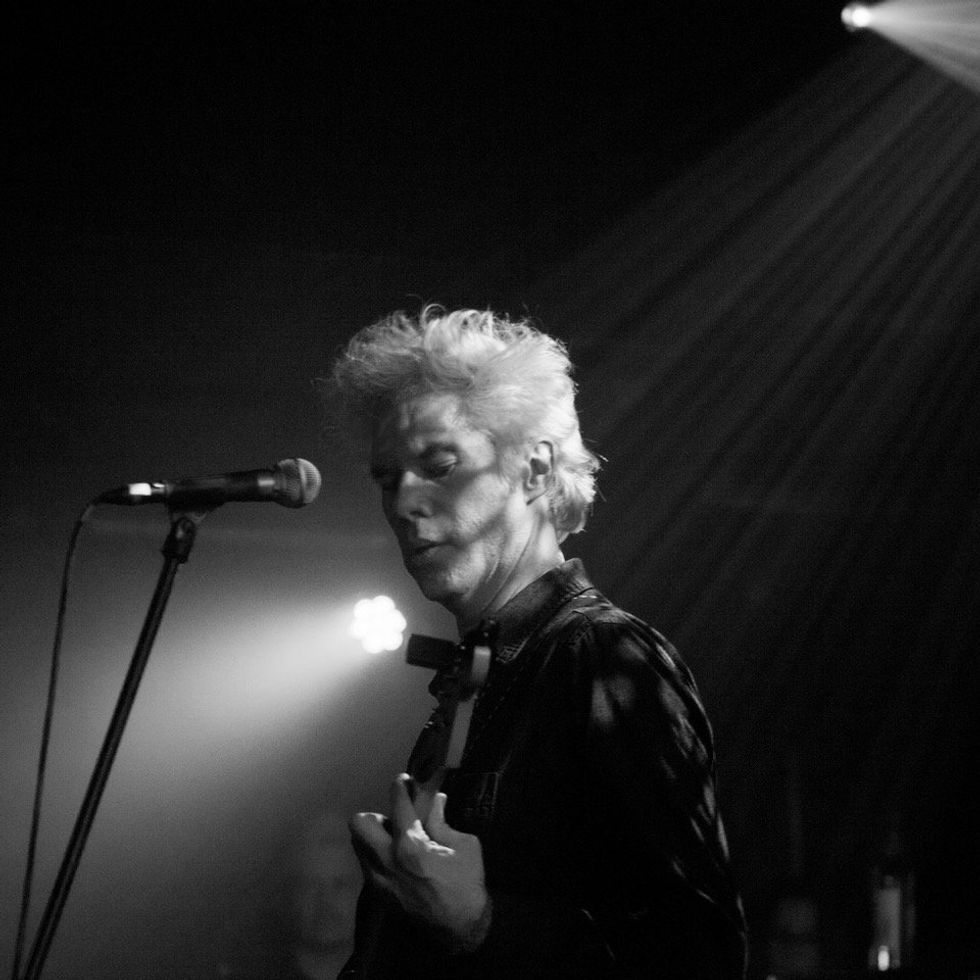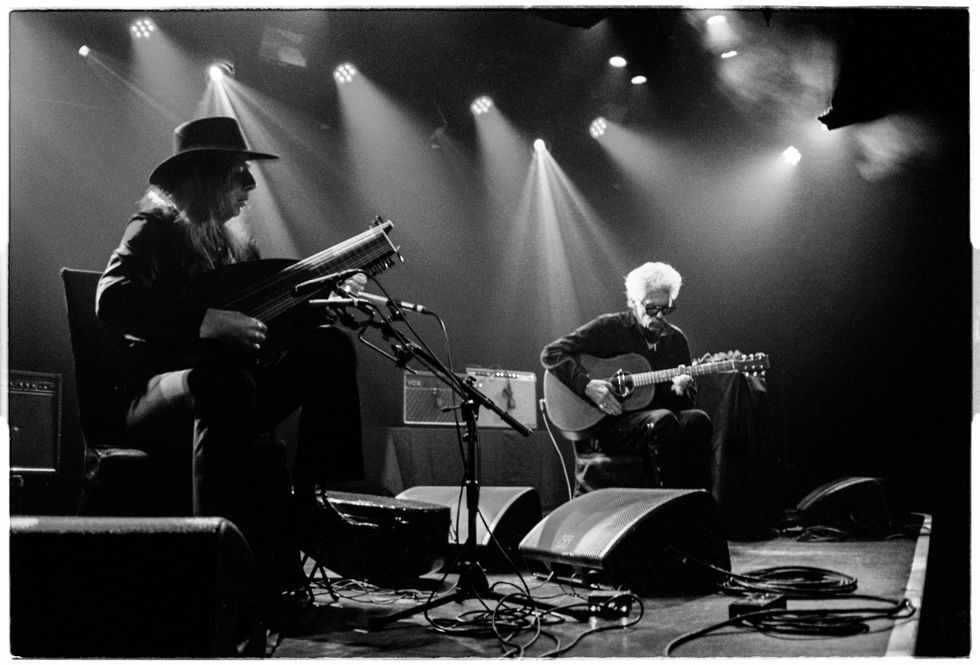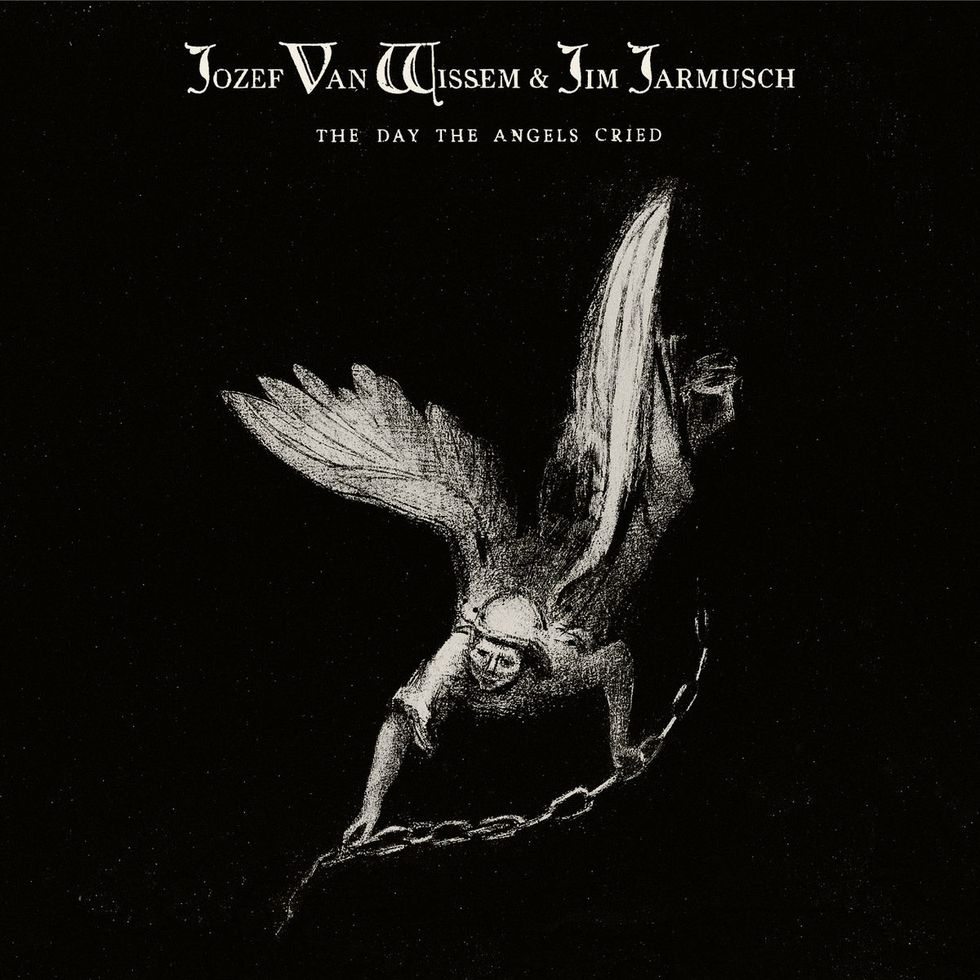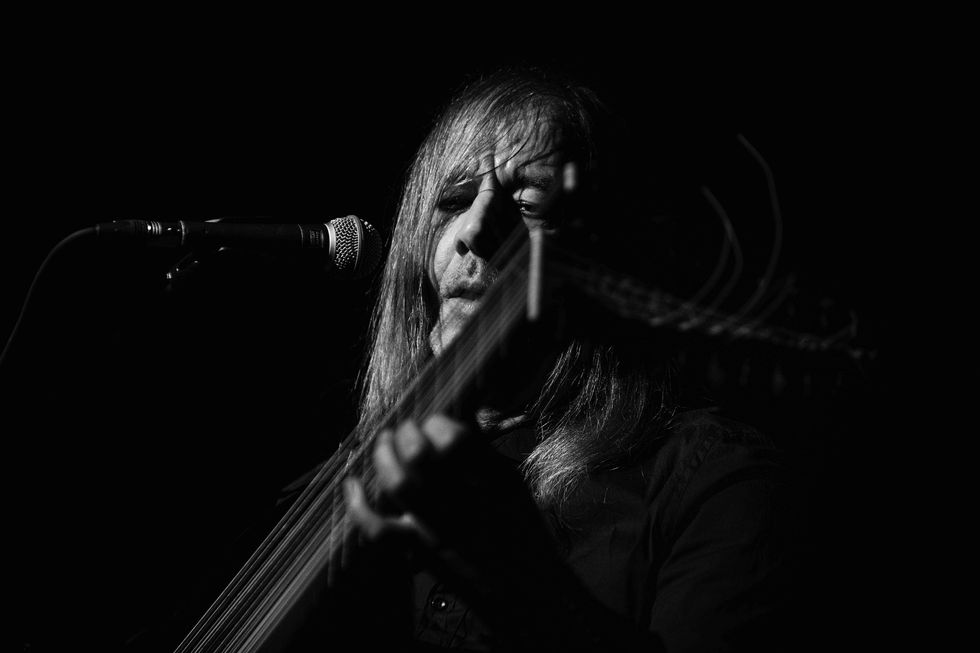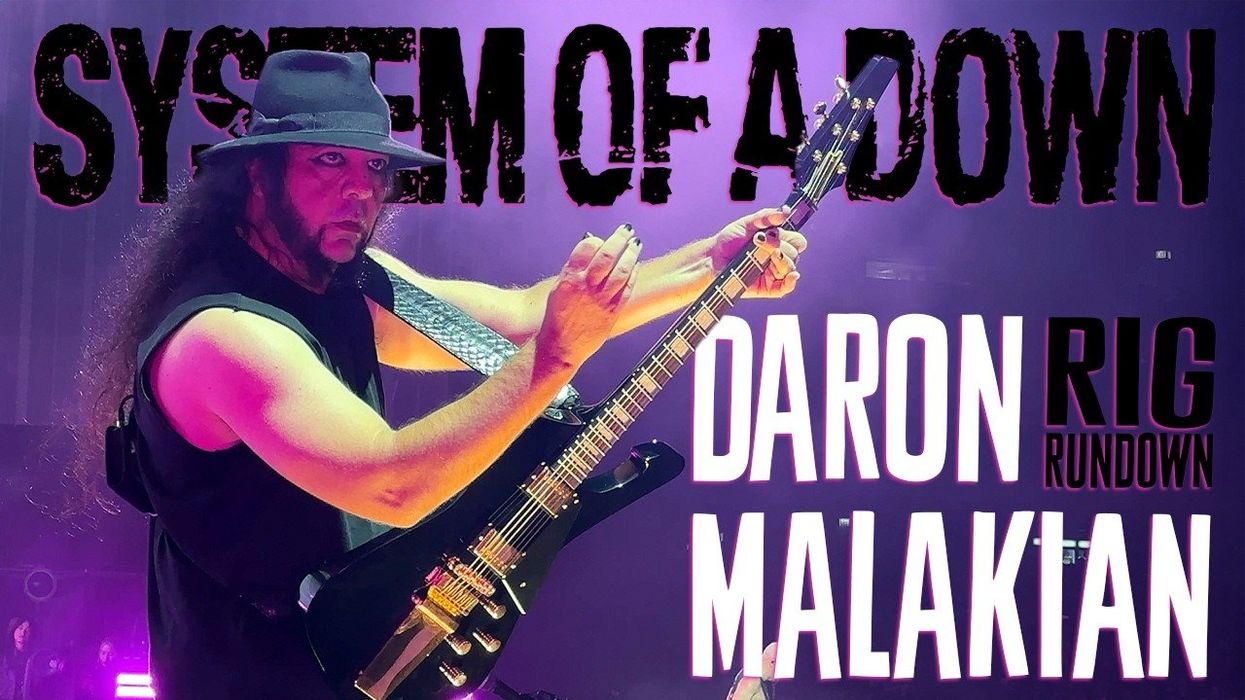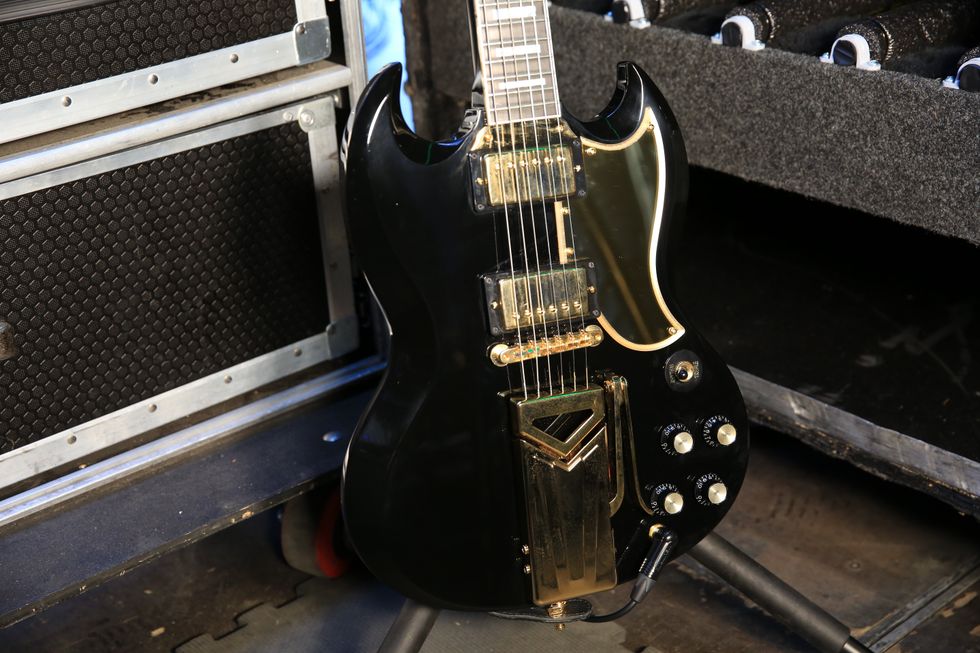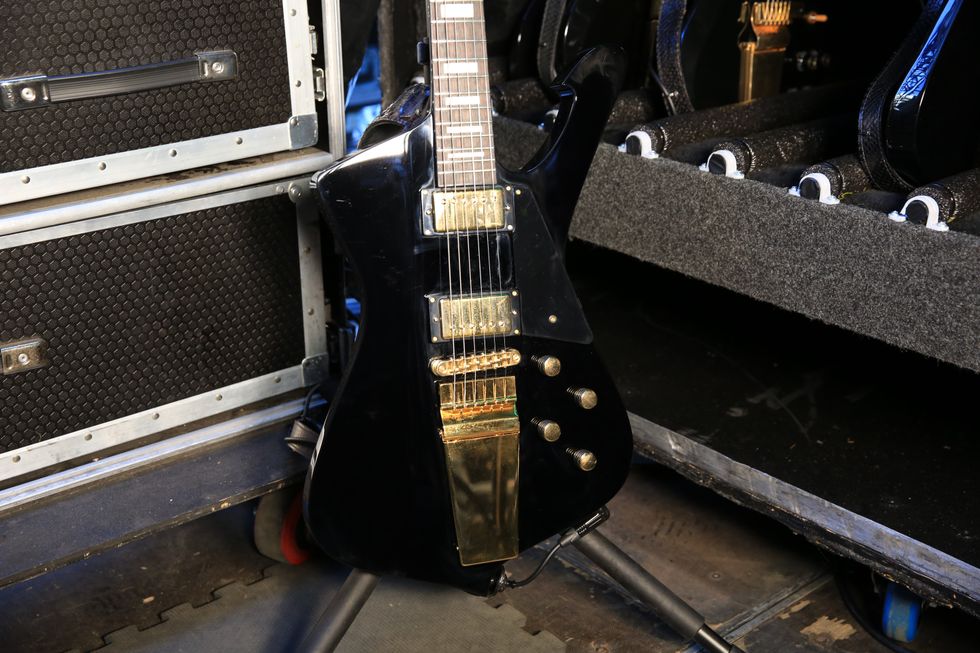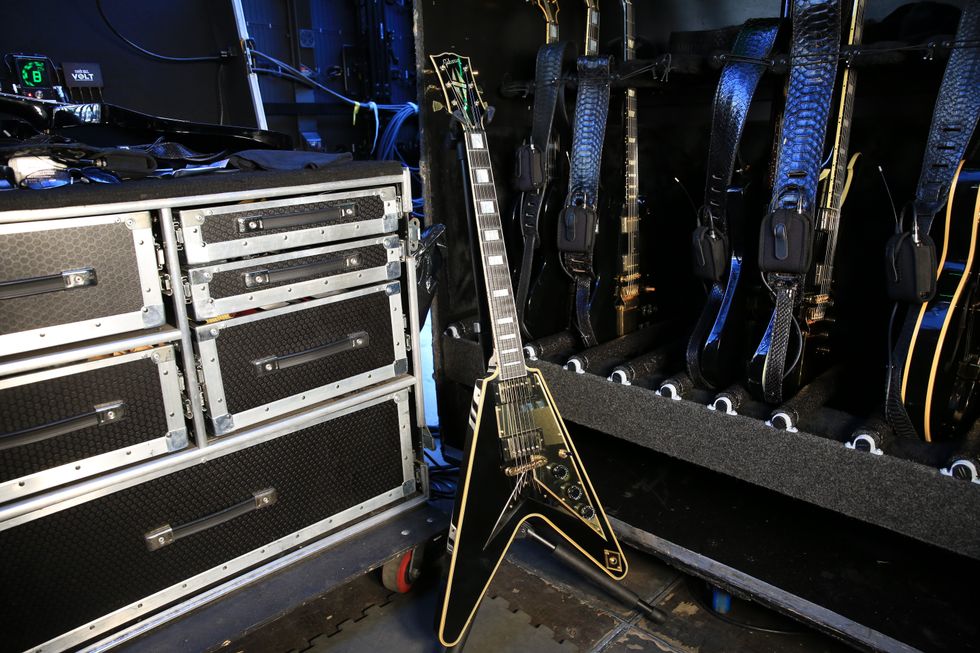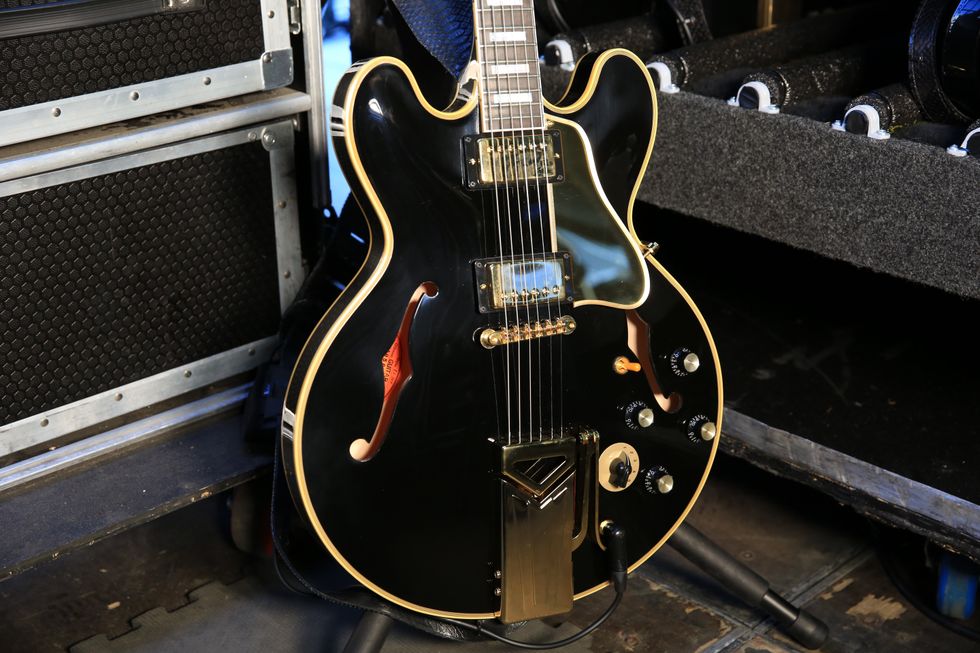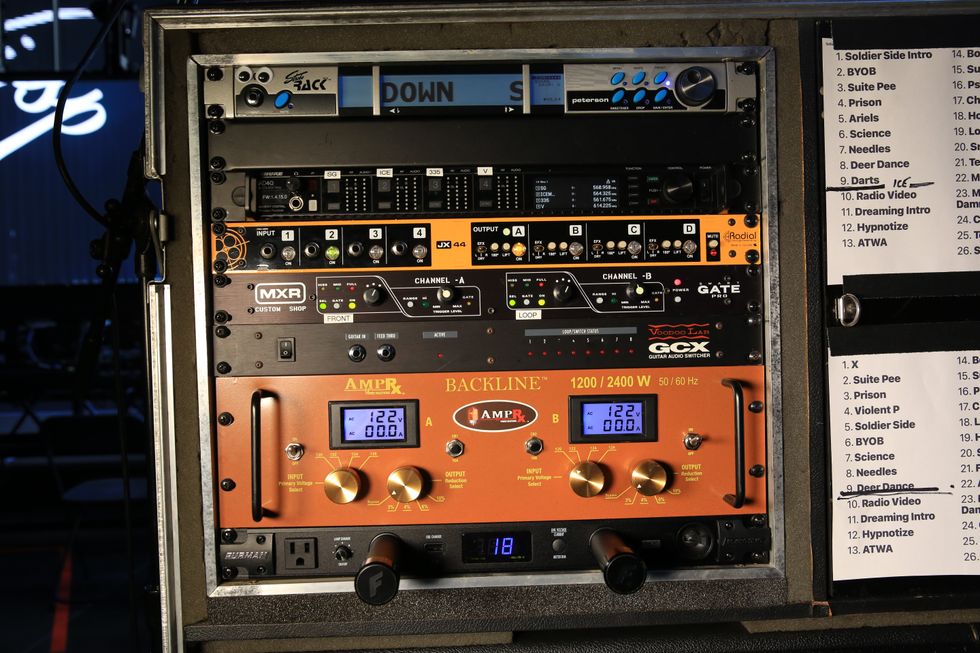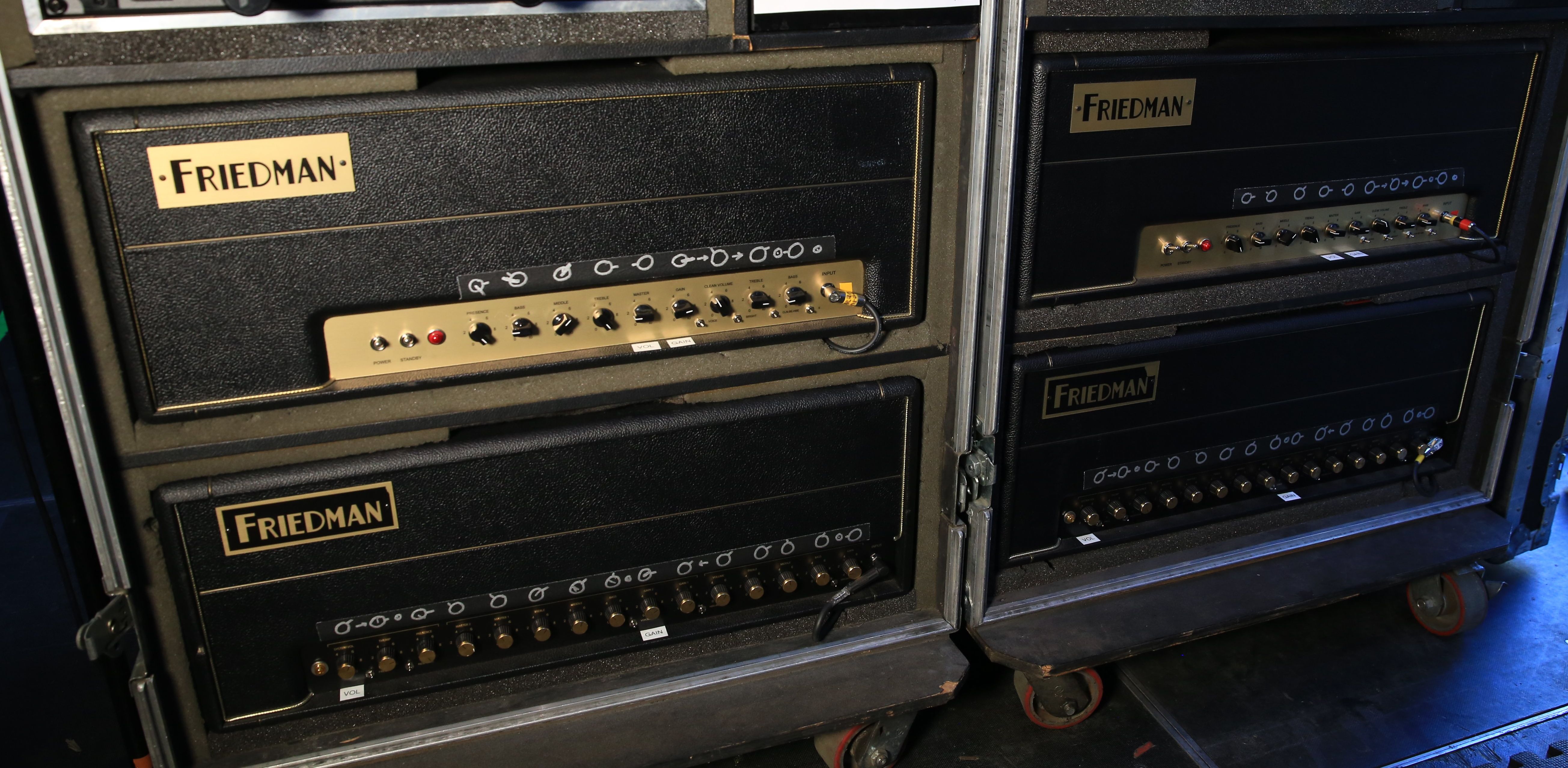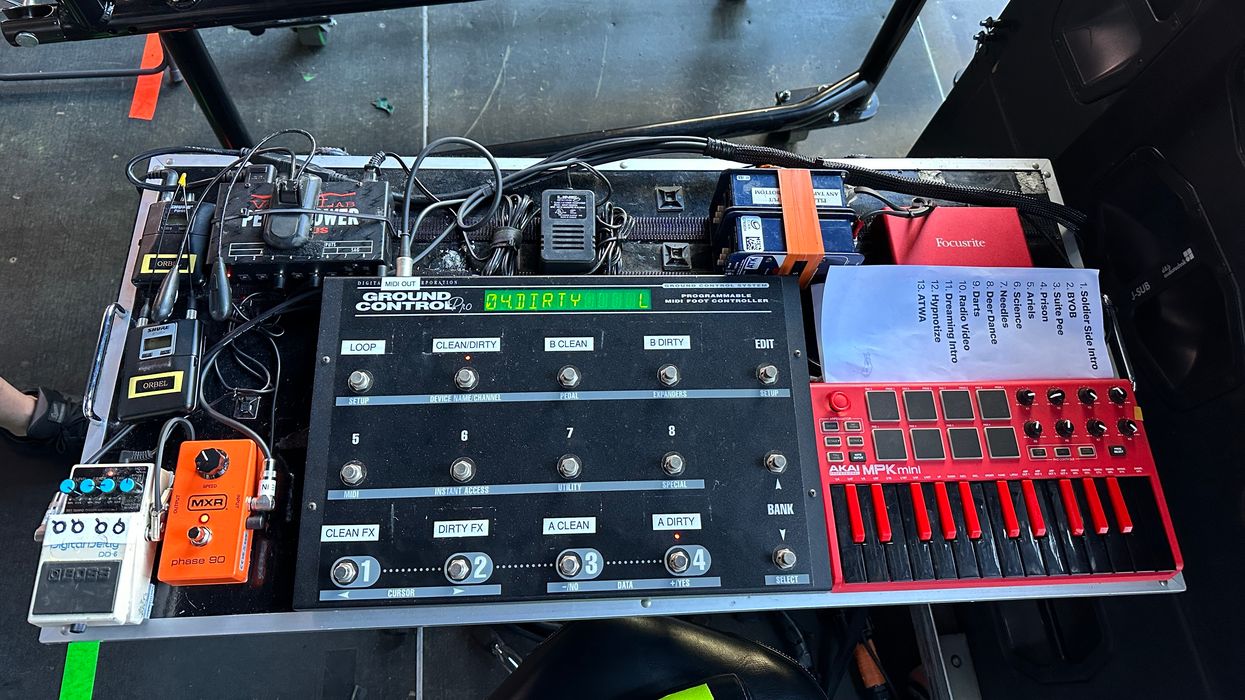Thirty-five years ago, a group of University of Buffalo students gathered in a basement, drank a lot of beer, and played some tunes. They had no goal other than to have fun and party. But it wasn’t long before they headed into a studio housed in an apartment above local guitar shop Top Shelf Music to record the debut moe. album, Fatboy. Slowly, the band built a devoted fan base, crisscrossing the country in a van. As they persevered, the band and their audience grew up together, and now it’s the fans’ children who are discovering the group.
The story of moe. is one of friendship, survival, resilience, and joy. Now poised to release their latest, Circle of Giants—chock full of rock ’n’ roll grooves both lilting and bone-shaking, and anthemic chord progressions—the group is as strong as ever. Chuck Garvey and Al Schnier’s vibrant, bright guitars chime, crush, strum, and wail, and there’s a buoyant spirit and evocative lyrics. The lead single, “Ups and Downs,” is a song bassist Rob Derhak wrote after a casual conversation with a mailman about the peaks and valleys of a long marriage. One of the album’s most moving tunes, the lyrics go:
She looks at him
He coughs into his overcoat
It smells like gin
From a different moment
Sail along, just another wounded soldier
Now carry on, carry on but older
The last bittersweet couplet might well apply to the band. They faced extraordinary challenges over the past six years that all but stopped them in their tracks.
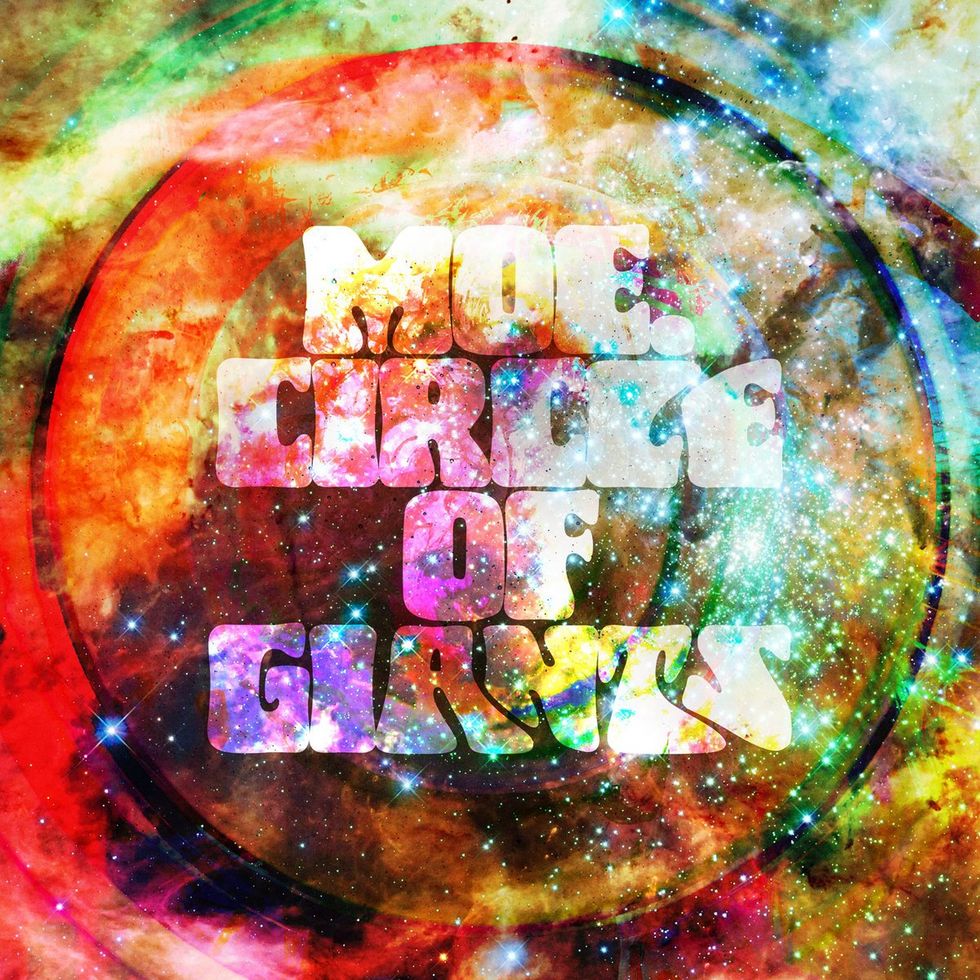
Thirty-five years after forming at University of Buffalo, on Circle of Giants, moe. maintain their close-knit family vibe.
The first blow was Derhak’s battle with oropharyngeal cancer in 2017. With the group rallying around him and fundraising initiated by fans, he went through harrowing treatment, beat the odds, and the cancer went into remission.
Not long thereafter, Garvey had a stroke. He lost partial movement in his left side as well as the ability to speak. “My syllables didn’t know how to find each other,” he recalls. The guitarist had to relearn movement and speech. The band gathered, made music, and helped him heal. All marveled that, even with diminished facility, he still sounded like Chuckwhen he picked up his instrument.“I grew up listening to the Grateful Dead. They were kind of a model, but there were so many other things that I loved as well. Punk, prog, bluegrass…. There was never any question that we could put all of this into the band.” —Al Schnier
There were also personal losses, and then the pandemic came. Suddenly everyone was writing music in isolation, deprived of the companionship they had come to know so well. After regrouping post-pandemic, there was a tragedy at a New Year’s Eve concert in 2023, where several audience members were struck and killed by a vehicle outside the concert hall. Devastated, moe. responded by saying, “We believe in the power of music to heal and unite.”
Al Schnier's Gear
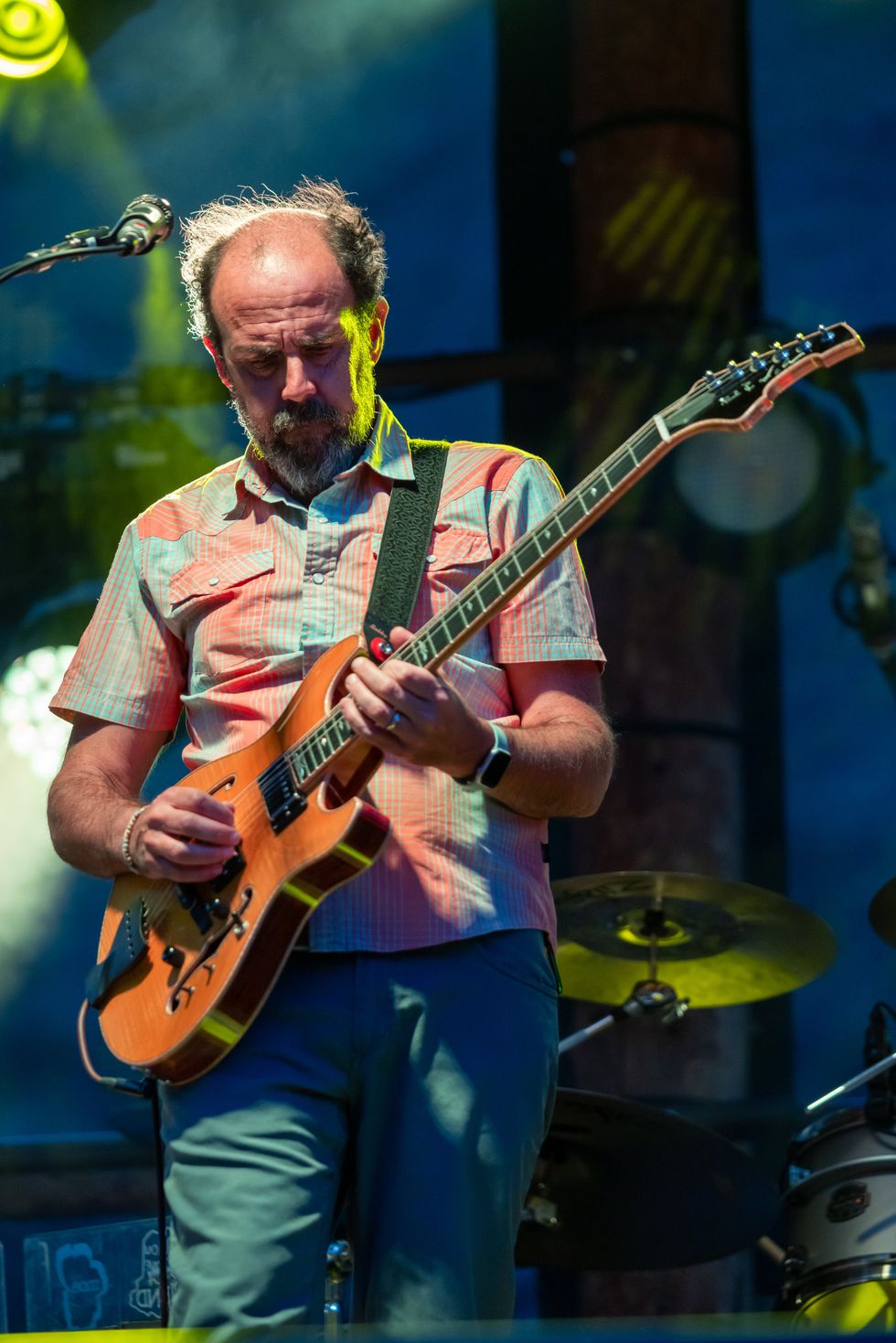
Al Schnier jams out on a Paul Languedoc G4.
Photo by Paul Citone
Guitars
Amps
- Two 1973 Mesa/Boogie Mark I amps loaded with Celestion Cream speakers
Effects
- Zvex Wah Probe
- Analog Man Envelope Filter
- Zvex Fuzz Factory
- Analog Man CompROSSor
- ARC Effects Klone
- Providence Chrono Delay
- Analog Man Bi-Chorus
- Kaden Effects FlutterTone tremolo
- Voodoo Labs Pedal Power 2 Plus
Strings and Picks
- D’Addario XL140 (.010–.052)
- Dunlop Primetone Semi Round 1.5mm
I asked Schnier how it felt to be making music with his partners after all they’ve been through. “The band brings me a sense of place,” he says, “a sense of identity and affirmation. The bonds between us are so deep. When we’re on the road, and we have a day off, we often all end up back in the bus around 8 o’clock just hanging out together. I don’t know if it’s that we’re creatures of comfort or that we just like each other’s company. It truly is a family.”
“The bonds between us are so deep.” —Al Schnier
The classic two-guitar frontline has defined the band’s sound from the beginning. Currently, Garvey plays a 1973 Telecaster Thinline that he outfitted with Lollar Wide Range humbuckers. His amp of choice is a Tony Bruno Underground 30. Schnier’s number one is a Custom Shop korina Gibson SG, which he plugs into two of the first Mesa/Boogies ever made (numbers 73 and 75).
The band’s guitar parts stem from the interplay between both players. Garvey and Schnier craft their lines by jamming, one riffing off the other—the sense of brotherhood extending to their composing habits. Someone will bring in a sketch and present it at rehearsal. The other members will help to shape the final product. No matter how finished a song might feel coming in, someone will always have an idea to make it better.
Chuck Garvey's Gear
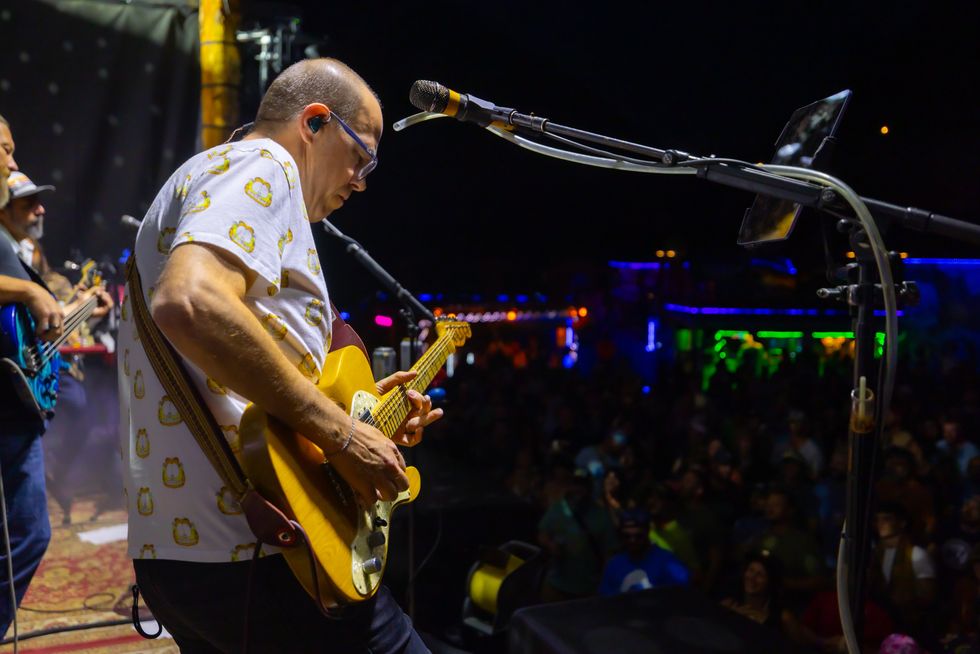
Chuck Garvey’s 1973 Tele Thinline is loaded with Lollar Wide Range pickups.
Photo by Paul Citone
Guitars
- Jerry Jones 6-string Doublecut Dual Lipstick
- 1973 Fender Telecaster Thinline with Lollar Regal Wide Range pickups
- 1994 Fender Custom Shop Stratocaster with Seymour Duncan single-coils
- 1978 Ibanez PF200
Amps
- Tony Bruno Underground 30 head with 3x10" cab
- Magnatone M10
- Tony Bruno Tweedy Pie 18
Effects
- Analog Man Sun Face “BART”
- Analog Man Buffer
- Analog Man Bi-CompROSSor
- Analog Man King Of Tone
- Foxrox Octron
- Benson Germanium Boost
- Benson Germanium Preamp
- Klon Centaur
- Italian-made Thomas Organ Company Cry Baby
- Paul Cochrane Timmy V1
- Chase Bliss Warped Vinyl MkII
- Source Audio Nemesis Delay
- TC Electronic Tuner
- Fulltone Deja’Vibe 2
- Lee Jackson Mr. Springgy
- Chelli Amplification Spring Reverb and Harmonic Tremolo
- Vemuram Shanks ODS-1
- Lehle 1at3 Switcher
- Voodoo Labs Pedal Power
- True Tone 1 Spot Pro CS11
Strings and Picks
- Dunlop Primetone Semi Round Smooth Pick 1.4 mm
- Wegen Triangular TF140 White 1.4 mm
- D’Addario NYXL (.010–.046)
The sound of moe. is often described as “genre defying.” I ask what this rather generic phrase means to them. “I grew up listening to the Grateful Dead,” Schnier says. “They were kind of a model, but there were so many other things that I loved as well. Punk, prog, bluegrass…. There was never any question that we could put all of this into the band."
“You never know when you’re going through a crisis whether it’s going to turn out okay.” —Chuck Garvey
Garvey chimes in and talks about his admiration for Frank Zappa. “When we started out at Wetlands in New York City around 1990, it was a very open environment. One day they would program ska, the next some African band, the next a punk band. We were into it all.”
Over the many years, moe. has had many “ups”: innumerable headline tours, international festivals from Bonnaroo to Japan’s famed Fuji Rock, and sold-out shows alongside such like-minded acts as the Allman Brothers Band, Robert Plant, members of the Grateful Dead, the Who, and Gov’t Mule. Next, 2025 brings a long tour. In some ways they’re making up for lost time.
As for the “downs”? Says Garvey: “You never know when you’re going through a crisis whether it’s going to turn out okay. I think I can speak for everyone when I say that our whole family coming together has been helpful for everyone. It’s part of that smaller community—but also that huge community of fans who are right there with us when we go through these things.”
Schnier, with a noticeable degree of emotion in his voice, adds, “It’s all made us closer, stronger. It’s all because we have each other. I couldn’t do it without these guys. I’m so grateful for that.”
YouTube It
Hear how guitarists Schnier and Garvey intertwine their parts and their sounds, creating a distinct guitar vocabulary as moe. tackles the lead single from Circle of Giants last August in Denver.
